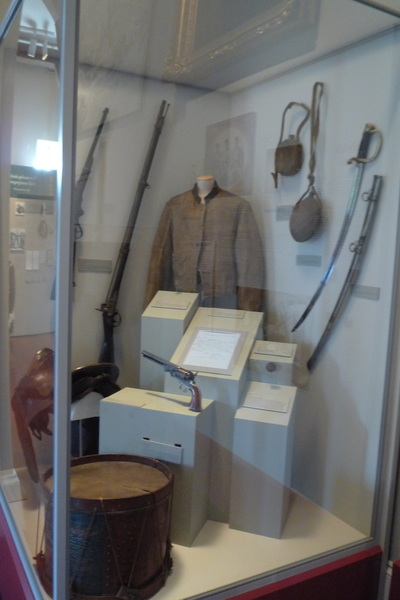Cabildo
701 Chartres St. | New Orleans, 70116
504-568-6968 | 800-568-6968

A visit to New Orleans’ historic French Quarter would not be complete without a stop at Jackson Square, which is where you will find the Cabildo. This elegant Spanish colonial building neighbors St. Louis Cathedral and houses many rare artifacts of America’s history.
Among them is Napoleon’s death mask, one of only four in existence. It was made from a mold crafted by Dr. Francesco Antommarchi, who was one of Napoleon Bonaparte’s physicians at the time of his death.
You’ll also see Jordan Noble’s drum. Noble was a young enslaved drummer famous for beating the long drumroll at the Battle of New Orleans.
An 1839 self-portrait by Julien Hudson, is also on display. A free man of color, he was one of many during the antebellum period who worked as professional artists, writers and musicians in New Orleans.
ADMISSIONS
Adults - $6
Students, senior citizens, active military - $5
Children 12 and under - Free
Groups of 15 or more (with reservations) - 20 percent discount
School Groups (with reservations) - Free
Purchase tickets for two or more museums - 20 percent discount
AAA membership discount - 10 percent discount
Individuals with special needs are requested to contact Museum staff members to make other arrangements.
The Cabildo was built under Spanish rule between 1795 and 1799, following the Great New Orleans Fire of 1788 that completely destroyed the structure that stood on the property. Designed by Gilberto Guillemard, who also designed the neighboring St. Louis Cathedral and the Presbytère, the Cabildo was the site of the Louisiana Purchase transfer in 1803, which finalized the United States’ acquisition of the Louisiana Territory and doubled the size of the fledgling nation.
The Cabildo served as the center of New Orleans government until 1853, when it became the headquarters of the Louisiana State Supreme Court, where the landmark Plessy v. Ferguson decision originated in 1892.
The building was transferred to the Louisiana State Museum in 1908 and has since served to educate the public about Louisiana history.
Among them is Napoleon’s death mask, one of only four in existence. It was made from a mold crafted by Dr. Francesco Antommarchi, who was one of Napoleon Bonaparte’s physicians at the time of his death.
You’ll also see Jordan Noble’s drum. Noble was a young enslaved drummer famous for beating the long drumroll at the Battle of New Orleans.
An 1839 self-portrait by Julien Hudson, is also on display. A free man of color, he was one of many during the antebellum period who worked as professional artists, writers and musicians in New Orleans.
ADMISSIONS
Adults - $6
Students, senior citizens, active military - $5
Children 12 and under - Free
Groups of 15 or more (with reservations) - 20 percent discount
School Groups (with reservations) - Free
Purchase tickets for two or more museums - 20 percent discount
AAA membership discount - 10 percent discount
Individuals with special needs are requested to contact Museum staff members to make other arrangements.
The Cabildo was built under Spanish rule between 1795 and 1799, following the Great New Orleans Fire of 1788 that completely destroyed the structure that stood on the property. Designed by Gilberto Guillemard, who also designed the neighboring St. Louis Cathedral and the Presbytère, the Cabildo was the site of the Louisiana Purchase transfer in 1803, which finalized the United States’ acquisition of the Louisiana Territory and doubled the size of the fledgling nation.
The Cabildo served as the center of New Orleans government until 1853, when it became the headquarters of the Louisiana State Supreme Court, where the landmark Plessy v. Ferguson decision originated in 1892.
The building was transferred to the Louisiana State Museum in 1908 and has since served to educate the public about Louisiana history.
Photography
Randy Uehara Mistrot
Randy Uehara Mistrot









